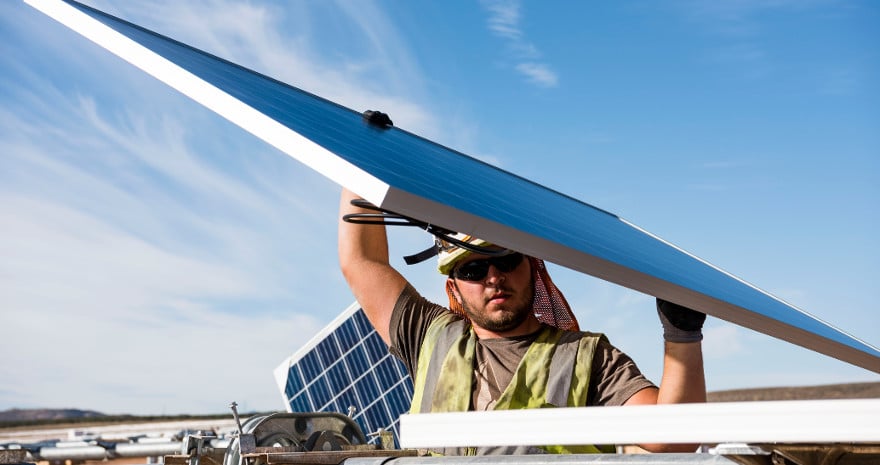With the ink still wet on last night’s Section 201 tariff decision, analysts are scrambling to determine what the affects of tariffs will be.
This morning pv magazine spoke with MJ Shiao, head of Americas research at GTM Research, who provided some outlines of what his company expects. Based on current prices, GTM Research expects a 30% tariff in 2018 to result in an effective tariff of around 10 cents per watt for the most common crystalline silicon modules.
In line with previous assessments, Shiao indicates that he expects an 11% reduction in the U.S. market over the next four years because of the tariffs, as opposed to a solar industry with no trade action. The greatest effect will be on the utility-scale sector, where modules make up a higher portion of overall system costs, and markets in emerging regions such as the South will be the most impacted.
“You can look at 11% and say that is not so bad, but I think one of the more intangible impacts is that you do reduce or eliminate all these state markets that are on the cusp,” Shiao told pv magazine. “Within our revised demand forecast solar will obviously continue to grow, especially at the end of this decade, but you do lose these states that are looking to start to build their own state solar industries.”
Shiao notes that in the South project pipelines were beginning to build and also notes that the tight margins in the region mean that even the limited tariffs that are being imposed will have more of an effect. This is in contrast to the Northeast, where high wholesale and retail electricity prices create more attractive markets.
The Midwest is another region where Shiao thinks these tariffs do damage, but describes this more as an “opportunity cost”, given that markets outside of Minnesota, Illinois and Michigan are still largely undeveloped.
Shiao also took the opportunity to point out that the tariffs are unlikely to have their proposed effect of re-starting U.S. cell and module manufacturing. “it is still bad policy in that it doesn’t really accomplish what it sets out to do,” stated Shiao. “It’s not going to spur a ton of U.S. cell and module manufacturing.”
This content is protected by copyright and may not be reused. If you want to cooperate with us and would like to reuse some of our content, please contact: editors@pv-magazine.com.









I guess that moderation and compromise is judged as being extremely effective if it ends up with both sides being “mad” and unsatisfied…such as this decision was.
On one side, China was getting away with total unfair government subsidies (providing nearly free buildings and the latest solar manufacturing equipment and money to anyone wanting to occupy them), and on the other side the US had too many crazy weird solar schemes that (too often) failed the laws of physics, and true costs – yet drew in a lot of speculation and government money. (And bad press…).
The laws of economics were violated on both sides and now we must settle in
and work through this. I strongly believe we can. Solar PV electricity is inevitable, and is destined to be a major true source of power for mankind.
As a potential solar consumer in the south, I am not happy with and oppose the tariff on solar cells. The article sums up with the notion that this tariff will not spur US production of solar cell and module manufacturing.
Further, I think we all know that this tariff being imposed by the Trump administration is designed to protect the consumption of carbon-emitting fossil fuels.
Surveying the field of PV over time I’ve been more intrigued by the next generation of PV that would use the newer techniques from painted to printed cells – perovskite solar cells.
Considering this next generation product promises low costs, one might look at the tariff as an advantage for domestic producers to hype investment in this game-changing technology.
The point being this ‘protection’ scheme, which would not be available to domestic manufacturers of this next generation solar technology even if it were wanted, now exists and keeping it in place may ‘somehow’ allow the US to compete more effectively in manufacturing PV using this new technology.
Then again, maybe not 🙂
Where did that emoji come from?